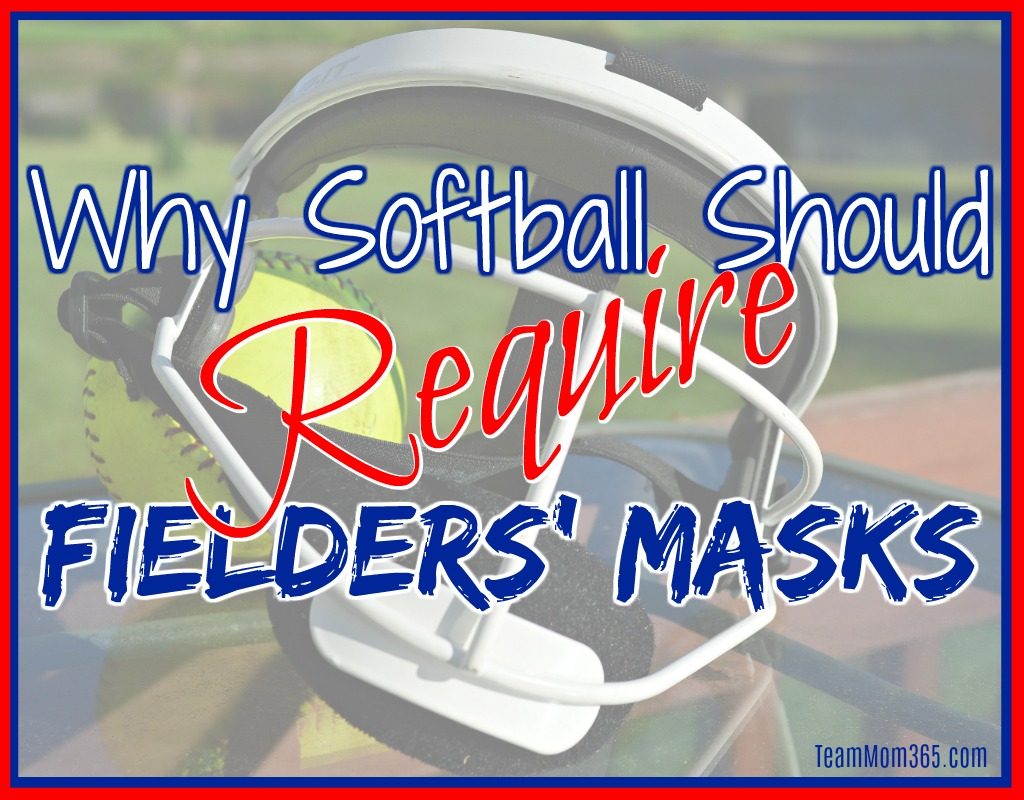We’ve just come to the end of another high school softball season which makes way for the next travel softball season to begin. And this year, just like every other, the season was littered with players across the country who received serious facial injuries after being hit in the face by a batted ball. This year it hit very close to home for us because a former teammate of my daughter’s was one of those victims. However, she was one on the lucky ones. She only (I say only like it’s no big deal) sustained a broken nose in two places which required a painful reset.
Most stories of softball facial injuries mirror those of the Kentucky high school player (a pitcher) hit in 2017 requiring her to be airlifted to Evansville, Indiana for emergency surgery. Her injuries included fractures above the eye, below the eye, nose and cheekbone. These injuries can easily be prevented if parents, leagues and sanctioning organizations got off their rear ends and required fielders’ masks.
I am so sick of hearing how fielders’ masks make players look weak. Let’s get down to the nitty gritty of the science behind why fielders’ masks should be mandatory.
DISTANCE OF THE PITCHER FROM THE BATTER
During a properly executed pitch, not only could they be less than thirty feet away from the batter, they are in a vulnerable position with their glove hand tucked into their side and their pitching hand in any number of locations depending on the pitch they threw. This leaves them virtually unable to defend their face and head.
Consider this: A pitcher standing 36ft from the batter will have to react to a batted ball in approximately .353 seconds. For those keeping score at home, that’s less than half a second! Do you think you could react that fast?
DEFENSIVE STRATEGY
Softball bunt defense is markedly different than in baseball. In softball, the corner positions can play as close as 30 feet from the batter. They can be even closer if the batter show signs of bunting early prompting to corners to crash. Now you have players 15 – 20 feet from the batter!
Imagine what would happen if the batter reads the defense and pulls the bat back to go for a full hit. You might be saying, “That would never happen.” Guess what? It did. In Texas, that is exactly what happened.
Consider this: That third baseman who is now 20ft from the batter to defend the bunt only has .196 seconds to react. According to those smarty pants folks at Harvard, that is approximately the same time as the blink of an eye.
FIELDERS’ MASKS MAKE BETTER DEFENDERS
I can attest to the fact that when a player begins to wear a mask it actually makes them focus more on watching the ball into their glove. There are two reasons for this: (1) Instead of pulling their head because they are scared of being hurt they know the mask will protect them and (2) while there is a minimal amount of decreased vision, the players make up for this by keeping the ball “inside” the viewing window which requires they lower their head.
Remember, similar to teaching children a foreign language when they are young, by starting the players wearing the fielders’ masks at a young age, they adapt very quickly mitigating any perceived disadvantages.
COST TO BENEFIT ANALYSIS
Fielders’ Masks cost approximately $40. It’s a no brainer to see that the cost of a fielder’s mask far outweighs the cost of multiple surgeries to correct injuries that typically occur from being hit in the face by a batted ball. I don’t think it’s a stretch to guess the out-of-pocket expenses could be well over $20,000 as typically insurance companies pay out at an 80/20 rate.
Will the facemasks prevent every injury? Absolutely not. I am not naïve enough to think that it could. But it will drastically reduce the severity of the injury which can include detached retinas, lacerations, broken bones, broken noses, missing and broken teeth and concussions.
~*~*~*~*~*~*~*~*~*~*~*~
Let’s be honest for a second: Players, on their own, are not going to don a fielders’ mask. They think it makes them look weak. They think college coaches will think less of them if they are seen wearing one. Therefore, it’s up to us as the parents and board members of leagues and sanctioning organizations to make this important decision for them. It’s not rocket science.
Also, if we are really going to be so conscientious about football concussions, let’s also be conscious of softball injuries as well. Are loss of hearing and sight not enough for the powers-that-be to make a change?
What are your thoughts on fielders’ masks? Let us know on your Facebook page or on Twitter @TeamMom365.
Sue Nowicki is an alumna of the 2014/15 Disney Parks Moms Panel. She is a team mom extraordinaire who has filled her time serving as secretary, navigator, head cheerleader, treasurer, athletic trainer and team psychologist for her daughter’s travel sports team for 10 years before becoming a team owner in 2015. You can follow her on Twitter @TeamMom365.
You can follow our pixie-dusted journey here: Facebook, Twitter, Instagram and Pinterest for more great Team Mom Lifestyle content.

